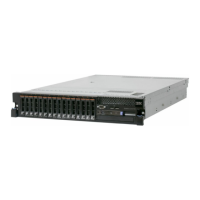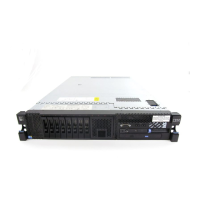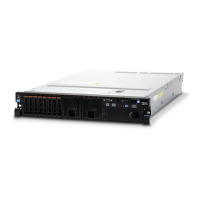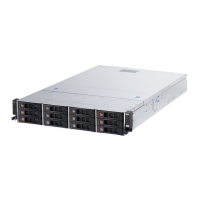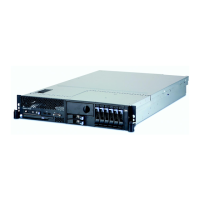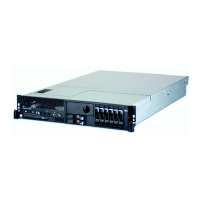state is indicated in bit 0 of the 1-byte Parameter Value field of the log parameter.
When this bit is set to 1, the alert is active.
Each tape alert flag has one of the following severity levels:
C: Critical
W: Warning
I: Information
Different tape drives support some or all of the following flags in the tape alert log:
Flag 2: Library Hardware B (W) This flag is set when an unrecoverable
mechanical error occurs.
Flag 4: Library Hardware D (C) This flag is set when the tape drive fails the
power-on self-test or a mechanical error occurs that requires a power cycle to
recover. This flag is internally cleared when the drive is powered-off.
Flag 13: Library Pick Retry (W) This flag is set when a high retry count
threshold is passed during an operation to pick a cartridge from a slot before the
operation succeeds. This flag is internally cleared when another pick operation
is attempted.
Flag 14: Library Place Retry (W) This flag is set when a high retry count
threshold is passed during an operation to place a cartridge back into a slot
before the operation succeeds. This flag is internally cleared when another place
operation is attempted.
Flag 15: Library Load Retry (W) This flag is set when a high retry count
threshold is passed during an operation to load a cartridge into a drive before
the operation succeeds. This flag is internally cleared when another load
operation is attempted. Note that if the load operation fails because of a media
or drive problem, the drive sets the applicable tape alert flags.
Flag 16: Library Door (C) This flag is set when media move operations cannot
be performed because a door is open. This flag is internally cleared when the
door is closed.
Flag 23: Library Scan Retry (W) This flag is set when a high retry count
threshold is passed during an operation to scan the bar code on a cartridge
before the operation succeeds. This flag is internally cleared when another bar
code scanning operation is attempted.
Recovering the server firmware
Important: Some cluster solutions require specific code levels or coordinated code
updates. If the device is part of a cluster solution, verify that the latest level of code
is supported for the cluster solution before you update the code.
If the server firmware has become corrupted, such as from a power failure during
an update, you can recover the server firmware in one of two ways:
v In-band method: Recover server firmware, using either the boot block jumper
(Automated Boot Recovery) and a server Firmware Update Package Service
Pack.
v Out-of-band method: Use the IMM Web Interface to update the firmware, using
the latest server firmware update package.
Note: You can obtain a server firmware update package from one of the following
sources:
v Download the server firmware update from the World Wide Web.
v Contact your IBM service representative.
Chapter 3. Diagnostics 109

